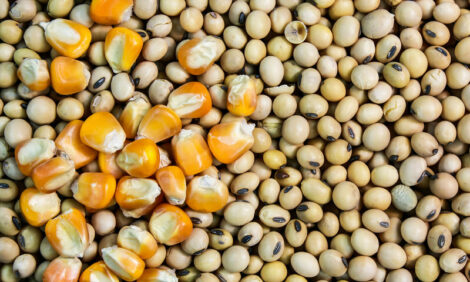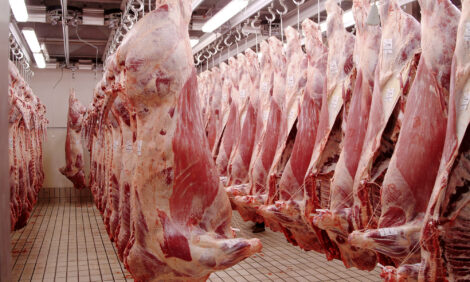



Boar Taint: An Understanding of What It is
GLOBAL - Boar taint is an offensive odour which is released from pork when it is cooked.The amount of taint varies from pig to pig but is particularly high in meat from intact adult males. Some people are more sensitive to the presence of taint than others and those who find it offensive say that the smell resembles urine, faeces, musk or onions.
 |
The taint is caused by compounds that accumulate in the fat as male pigs become sexually active. There are two main taint compounds:
- androstenone, a male pheromone produced in the testes
- skatole, a by-product of bacterial activity in the gut
The level of androstenone is directly influenced by the activity of the testes and thus increases dramatically as the pig reaches puberty. Skatole is produced in the gut of both male and female pigs, but the breakdown of skatole absorbed into the body is inhibited by sexual steroids – so it also tends to accumulate in male pigs as the testes start to produce more testosterone at puberty.
Traditionally, pork producers have used physical castration of male piglets as the primary method of controlling boar taint. Although this method does not reduce the risk of taint 100%, it does reduce it sufficiently for meat from barrows to be routinely sold, although some speciality butchers, in Asian countries, will only sell meat from female pigs. Globally, about 95% of male pigs are castrated as piglets.
However, the control of boar taint using physical castration has a number of drawbacks:
- Production losses due to infection, injury and herniation
- Reduced feed conversion compared to intact boars
- Carcass that has less lean and more fat compared to intact boars
- Pain and stress for the animal
In some markets, such as the UK, male pigs are not castrated but slaughtered early, before there is a great risk of boar taint compounds accumulating in the meat. However, this means that producers cannot reap the benefits of the rapid growth rates of the late finishing stage and pork quality can suffer. Other methods of boar taint control which have been suggested include using sexed semen to raise female pigs only (again losing out on the boar-like growth and higher carcass weights), or breeding ‘low taint’ pigs. The use of special diets to reduce the risk of taint and chemical analysis of meat on the slaughter line to spot and remove tainted carcasses, have also been considered. So far, only one of these alternative methods for controlling boar taint has been proven and adopted in the commercial environment – vaccination.
For further information visit the Pork Quality information page by clicking here.
Further Reading
| - | Go to our previous news item on this story by clicking here. |







